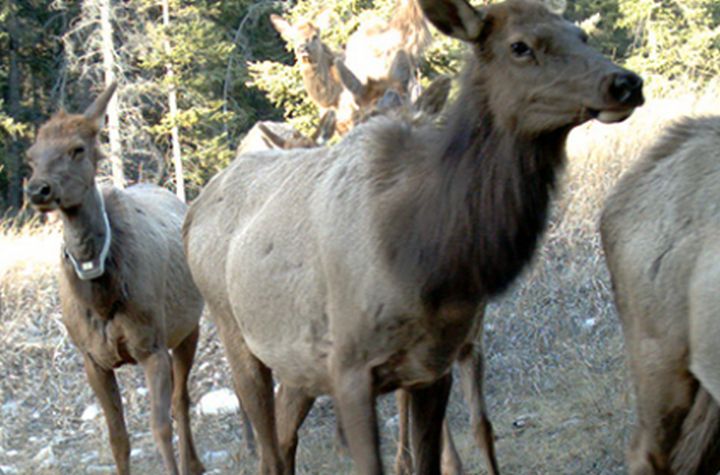Once they reach nine or 10 years of age, female elk have usually learned to outsmart their main predators — human hunters — and become almost “invulnerable” to them, according to a University of Alberta study published in the journal PLOS ONE on Wednesday.

For six years, lead author and biologist Mark Boyce and his team used the diverse landscape of southwest Alberta and southeast British Columbia as a backdrop for their research.
The 46,000 km2 area was chosen because human hunting there is “by a wide margin the largest source of elk mortality” and hunting was allowed in most of the region.
READ MORE: How do you free 2 locked elk? Alberta wildlife officers aim for their antlers
The researchers captured female elk with GPS radio collars before released them again. They then tracked their movements through consecutive hunting seasons, taking into account terrain variables, like whether they were travelling through forest cover or rugged terrain.
The researchers found as female elk get older, they adjust their behaviour and the females that were “more cautious were more likely to survive.”
The precautions researchers found the animals took were reducing their movements — which lowered their chance of being killed by hunters — and trying to stick to “secure areas” like forest and steep terrain. The study concluded “age-related behavioural differences in females are driven by both human selection and learning.”
READ MORE: Full house as Elk Island National Park considers potential wildlife cull
The researchers found the female elk adjusted their conduct out of fear of human hunters because they posed the most significant threat to their survival.
Of the elk monitored by their long-term research, about 50 per cent of males and 20 per cent of females were shot by hunters. Less than five per cent were killed by natural predators like cougars and wolves.
Remarkably, Boyce and his team even found the elk they studied modified their behaviour during bow and arrow hunting season and rifle hunting season.
“Older females increased their use of rugged terrain during the hunting season, and this was recorded to a greater extent during the bow season than during the rifle season,” the study reads, adding that could be because rifle hunters can shoot from a further distance than bow hunters, so it’s more difficult for bow hunters to stalk elk in steep terrain.
The study also noted the consistency with which elk change their behaviour to avoid hunters.
“Elk vary considerably in how they change their overall behaviour as they age,” the study reads. “However, when it comes to their response to hunters, they change their behaviours in a uniform way.”
READ MORE: Concern over the future of fish and wildlife: Kelowna town hall looks at options
Boyce and his team said the pressure on the species from hunters is much harder on males than females, because males tend to exhibit more bold behaviour which makes them more likely to get shot.
Because of this, the researchers concluded the higher mortality rate for males from hunting makes it harder for them to adapt and learn to adjust to avoid being killed. Females, on the other hand, were found to have a higher chance of survival because their more cautious conduct gives them more leeway to learn.
READ MORE: Drone spooks 1,500 elk into stampede through snow in Wyoming
The study also noted these types of behavioural shifts have implications for conservation and management of the species. They said because the techniques used by different predators (i.e. hunters, wolves, cougars) vary, “they arguably select for different behavioural types” and that those who manage elk populations should be careful not to allow human hunting pressures force elk to lose traits that help them avoid their natural predators.
WATCH: Caught on camera: Police dashcam captures sudden collision with elk






Comments